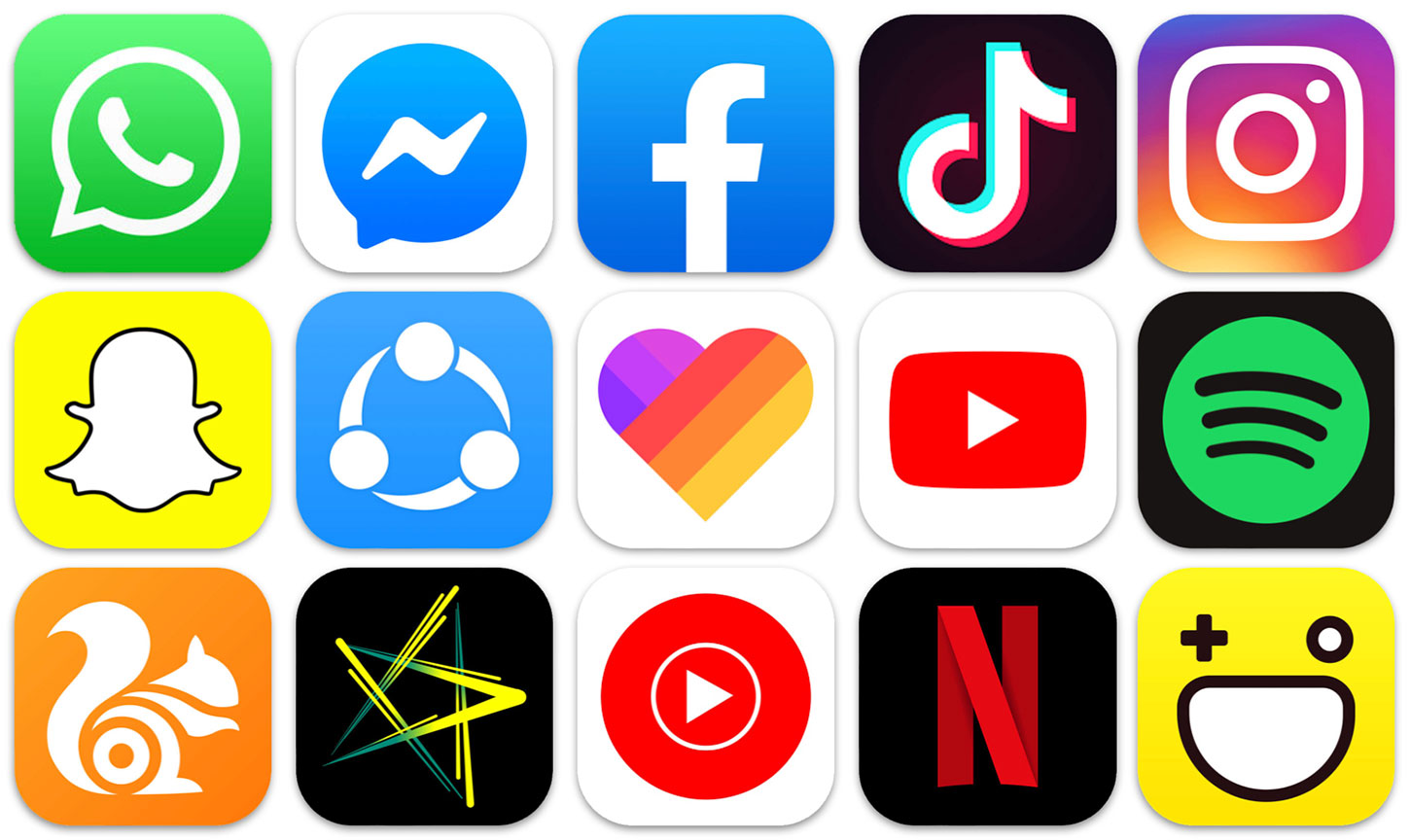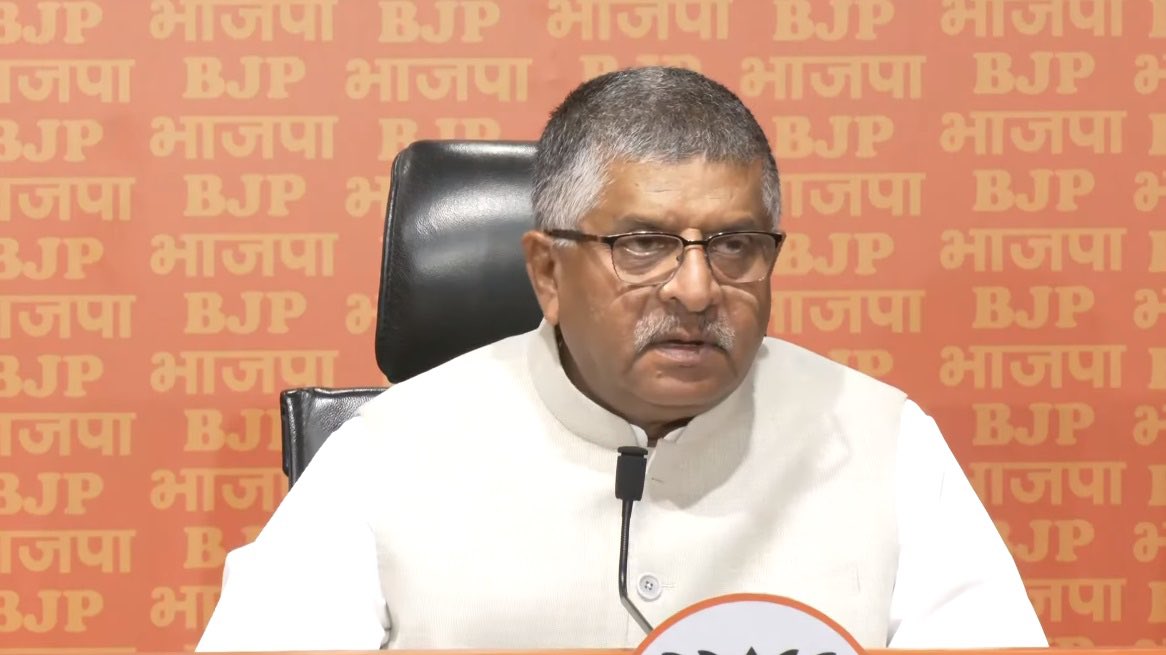Sensor Tower research data shows app installation growth slowed to 1.7%
Bengaluru, NFAPost: According to preliminary data from app store intelligence firm Sensor Tower, global consumer spending in mobile apps hit a record $64.9 billion during the first half of 2021. The record rise is despite the second wave of covid pandemic.
The report states that top subscription apps generated $8.3 billion worldwide. The data states a 24.8% increase in spending seen across both the App Store and Google Play, compared with the year-ago period.
But while industry experts believe the accelerated shift to mobile fueled by the pandemic is a trend that will continue, it’s worth noting that — despite the new record — the growth rate for consumer spending has slightly slowed, and the download growth slowed more dramatically.
From the first half of 2019 to the first half of 2020, consumer spending on mobile apps grew 28.4% from $40.5 billion to $52 billion, for comparison — slower than the 24.8% seen in the current period.
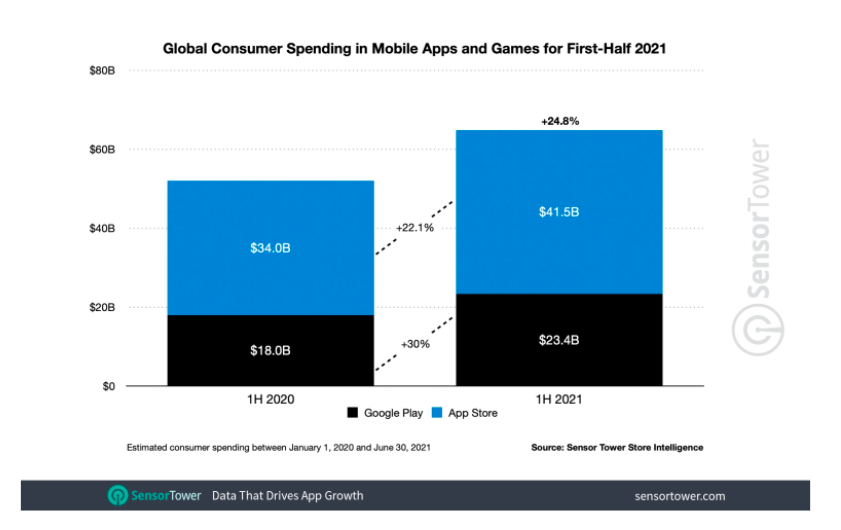
Image Credits: Sensor Tower
Apple’s App Store accounted for $41.5 billion in global consumer spending during the first half of 2021, or 1.8x the $23.4 billion seen by Google Play.
However, Google Play continues to outpace on growth, having jumped 30% from the $18 billion in the first half of 2020 compared with the 22.1% growth from the $34 billion the App Store had seen. This is due, in part, to demand from markets like the Philippines, where the Covid-19 pandemic has forced business closures and quarantines, Sensor Tower noted.
Consumer spend outside of games was driven by sports, finance, business, book and entertainment apps. Subscription-based apps in the top 100 apps (excluding games) were a large part of this spend, too, contributing $8.3 billion during the period. TikTok remained a top grossing app during the first half of 2021, followed by YouTube and regular top-earner Tinder.
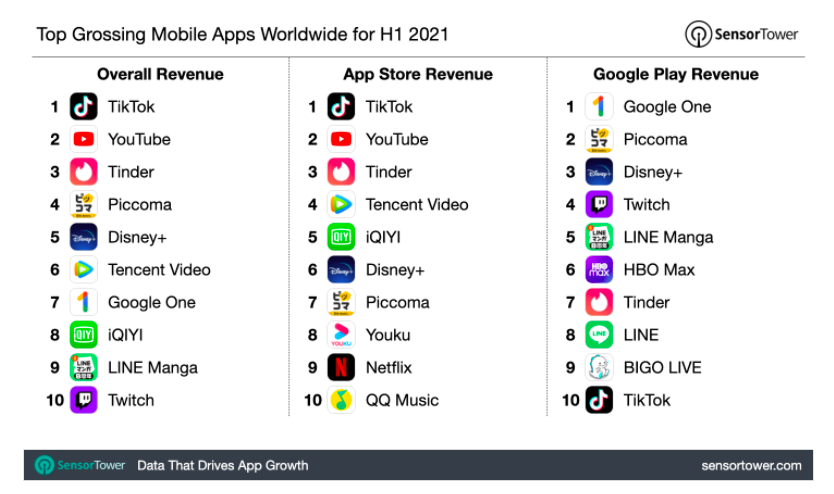
Image Credits: Sensor Tower
Of course, mobile game spending continues to contribute to the largest part of the overall consumer spend, reaching $44.7 billion during the first half of the year. The App Store accounted for $26 billion of that figure, but growth slowed from 26.5% in the year-ago period to 13.5% from the first half of 2020 to the first half of 2021.
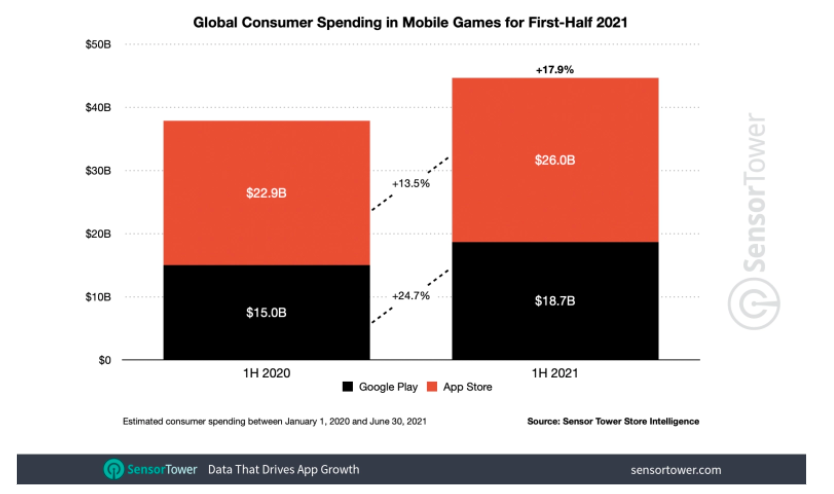
Image Credits: Sensor Tower
Top-grossing games in the first half of 2021 were, in order, Tencent’s Honor of Kings ($15 billion+), PUBG Mobile (including its localized version for China, reached nearly $1.5 billion), Genshin Impact ($848 million+), Roblox and Coin Master.
Mobile app download growth also significantly slowed in the first half of this year, the firm found.
Last year, the COVID-19 pandemic contributed to a surge of new mobile app installs around the world, as consumers looked to apps for work, school, shopping, heath, grocery and more. During the first half of 2020, app installs had jumped 25.7% year over year to reach 71.3 billion downloads. But in the first half of 2021, downloads only grew 1.7% to reach 72.5 billion installs.
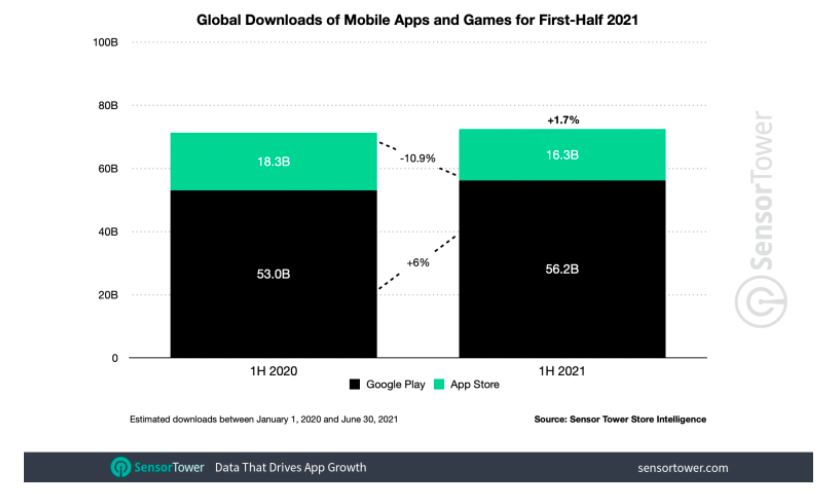
Image Credits: Sensor Tower
The App Store even saw a year-over-year decline in nongame installs in the first half of 2021, dropping 10.9% to 16.3 billion from 18.3 billion in the first half of 2020. Sensor Tower believes this is reflective of the increased competition for consumer attention in markets with a high number of iOS users, like the U.S., where businesses have been reopening and in-person activities are resuming.
Meanwhile, Google Play (nongame) installs climbed 6% in the first half of this year to 56.2 billion from the 53 billion in the first half of 2020. This could be tied to the demand for apps in markets where Android is dominant, like India, which has continued to be impacted by the pandemic. As a result, app adoption on Google Play was 3.5 times higher than on the App Store during the first half of 2021.
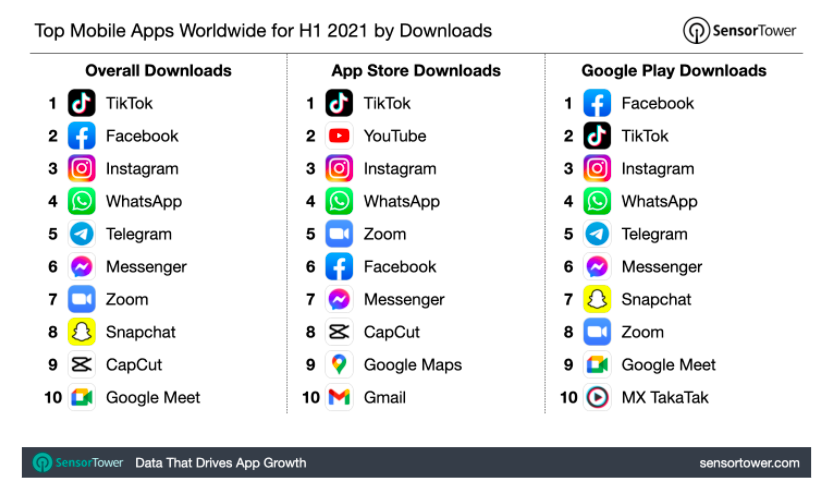
Image Credits: Sensor Tower
The (nongame) app with the most downloads was TikTok, which gained 384.6 million new installs during the first half of this year. But this is down by around 38% from the 619 million installs it saw during the year-ago period — a change that can be attributed to its ban from the Indian market last year. The rest of the top 5 most downloaded app chart was dominated by Facebook, which scored the No. 2, No. 3 and No 4 positions, with Facebook, Instagram and WhatsApp, respectively. Telegram was No. 5 followed by Messenger, Zoom, Snapchat, CapCut and Google Meet.
Mobile game downloads, meanwhile, fell 22.8% to 4.4 billion on the App Store but grew 3.9% on Google Play to 23.7 billion in the first half of 2021.
The app data presented is a preliminary analysis that may become more precise over time. It’s also worth comparing it to related reports from other firms for a fuller picture.
Top Subscription Apps Generated $8.3 Billion Worldwide
In the first quarter of this year, about 85% of non-game apps across both stores offered subscription in-app purchases, a percentage that rose slightly in Q2 to 86%.
In Q1 and Q2 of this year, respectively, subscription apps accounted for 76.7% and 78.5% of spending in the top 100 apps across both stores. Subscription apps among the top 100 non-game apps collectively generated approximately $8.3 billion in consumer spending in the first half of the year alone.
This is Y/Y growth of about 43 percent when compared to 1H20, when subscription apps among the top 100 earning apps generated approximately $5.8 billion.
Q2 2021 App Revenue and Downloads
Initial Sensor Tower projections show that while consumer spending was up Y/Y during the second quarter of 2021, first-time installs were down globally. Across both the App Store and Google Play, consumers spent approximately $32.8 billion in Q2 2021, up 18% Y/Y from $27.8 billion in the second quarter of 2020. However, new downloads fell 4.5% to approximately 36 billion first-time installs from 37.7 billion in 2Q20.
Mobile games experienced a similar trend, with consumer spending growing 9.9 percent Y/Y in the second quarter to $22.2 billion from about $20.2 billion in 2Q20. Adoption of mobile games fell 6.7% to about 14 billion downloads in 2Q21 from approximately 15 billion in the year-ago period.
The ongoing pandemic is still affecting a number of industries worldwide, and as various countries begin to recover, the mobile landscape will undoubtedly shift accordingly. Sensor Tower’s full report on the global app ecosystem in the second quarter of 2021 will be available soon, examining the latest trends and analyzing the continuing impact COVID-19 has had on user behavior.


